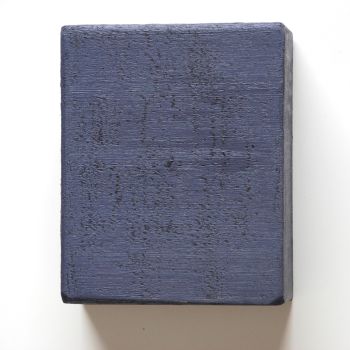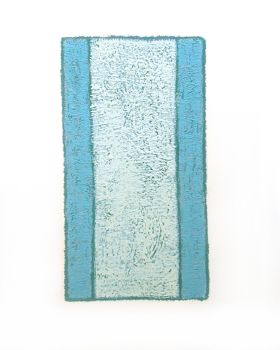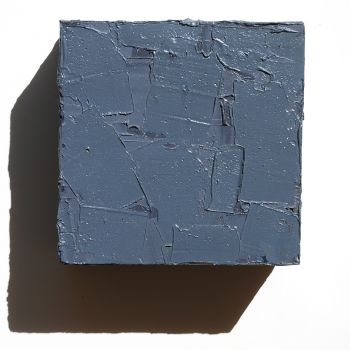Exploring the Essence of Minimalism
Art has always been a reflection of society, constantly evolving and transforming with the passage of time. One such transformative movement that emerged in the mid-20th century is minimalism. Minimalism challenged traditional notions of art by stripping away unnecessary elements and focusing on the essence of form, color, and space. This article takes you on a journey through the beginning, development, main features, and impact of minimalism in art history.
The Birth of Minimalism: Origins and Influences
Minimalism emerged as a reaction to the abstract expressionism and the dominance of the avant-garde movements of the 1940s and 1950s. Artists sought to simplify art and reduce it to its most fundamental elements.
The influences of minimalism can be traced back to the works of Kazimir Malevich and Piet Mondrian, who pioneered abstract art and explored the use of geometric shapes and primary colors and resulted in the well known artmovement 'The Style'.
 One of the pioneers of minimalistic art, Piet Mondriaan, Composition en rouge, jaune, bleu et noir, 1921
One of the pioneers of minimalistic art, Piet Mondriaan, Composition en rouge, jaune, bleu et noir, 1921
Development and Evolution of Minimalism
Minimalism gained momentum in the 1960s and 1970s, particularly in the United States. Artists began to create artworks with a strong emphasis on simplicity, repetition, and precision.
They discarded narrative and emotional content, instead focusing on the purity of form. Minimalist sculptures, installations, and paintings sought to create a direct visual experience for the viewer.
 Minimalistic artwork by Frank Stella, Tahkt-I-Sulayman Variation II, 1969
Minimalistic artwork by Frank Stella, Tahkt-I-Sulayman Variation II, 1969
Key Features of Minimalism
a) Simplicity: Minimalist artworks often feature clean lines, geometric shapes, and a reduction of visual elements to their simplest forms. The artists strived for a sense of purity and clarity, leaving no room for unnecessary embellishments.
b) Repetition: Repetition became a key characteristic of minimalist art. By repeating forms, colors, or patterns, artists emphasized the essential qualities of their work, creating a meditative and immersive experience for the viewer.
 Modern minimalism by Peter Halley, Here and Now, 2018
Modern minimalism by Peter Halley, Here and Now, 2018c) Use of Space: Minimalism embraced the concept of negative space, the areas surrounding and between objects. The intentional use of empty space allowed for a heightened focus on the objects themselves, giving them a greater presence and impact.
 Dan Flavin's minimalistic installations with fluorescent light, 1970's
Dan Flavin's minimalistic installations with fluorescent light, 1970's
Impact and Influence of Minimalism
Minimalism had a profound impact on the art world, challenging traditional notions of art and aesthetics. By eliminating excessive ornamentation and emphasizing the fundamental elements of art, minimalism opened up new possibilities for artistic expression.
It influenced various art forms, including sculpture, painting, architecture, and design. Minimalism also had a significant impact on subsequent art movements, such as conceptual art and installation art.
 Dan Flavin's minimalistic installations with fluorescent light, 1970's
Dan Flavin's minimalistic installations with fluorescent light, 1970's
Iconic Minimalist Artists and Artworks
a) Donald Judd: Known for his minimalist sculptures, Judd created sleek and modular pieces using industrial materials such as steel and Plexiglas. His work, "Untitled (Stack)", exemplifies his minimalist approach by presenting a series of identical rectangular forms arranged vertically.

b) Agnes Martin: Martin's paintings epitomize the simplicity and subtlety of minimalism. Her use of grids and pale colors created a serene and meditative experience. "White Stone" is an iconic example of her minimalist style.
 Minimalistic painting by Agnes Martin, Dancer No. I (L.T.), c.1956, oil on board
Minimalistic painting by Agnes Martin, Dancer No. I (L.T.), c.1956, oil on board
c) Dan Flavin: Flavin's minimalist installations used fluorescent light fixtures to explore the interplay of light and space. His work, "Untitled (to the "innovator" of Wheeling Peachblow)" showcases his use of colorful neon tubes arranged in geometric compositions.
d) Frank Philip Stella: is an American painter, sculptor and printmaker, noted for his work in the areas of minimalism and post-painterly abstraction.
 Judy Chicago, minimalistic installation view of Rainbow Pickett (background) and Trinity (foreground)
Judy Chicago, minimalistic installation view of Rainbow Pickett (background) and Trinity (foreground)
Conclusion: Minimalism's Timeless Impact
Minimalism has left an indelible mark on the history of art. Through its emphasis on simplicity, repetition, and the exploration of space, this movement transformed the way we perceive and engage with art.
By focusing on the essentials, minimalism challenged the viewers to experience art in its purest form.
Today, the influence of minimalism can be seen not only in visual arts but also in design, fashion, and architecture, underscoring its enduring impact on our aesthetic sensibilities.
 A fine example of a contemporary minimalistic installation by Richard Serra, The Matter of Time, 2005, Guggenheim Bilbao
A fine example of a contemporary minimalistic installation by Richard Serra, The Matter of Time, 2005, Guggenheim Bilbao
Where is the best place to buy original minimalist art?
Here at Gallerease, we offer only the best curated art from renowned galleries and art dealers. See here for our current, available range of minimalistic and related art.

























